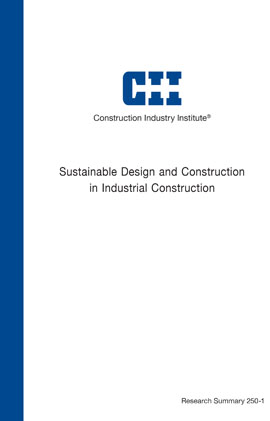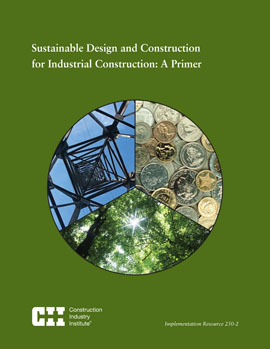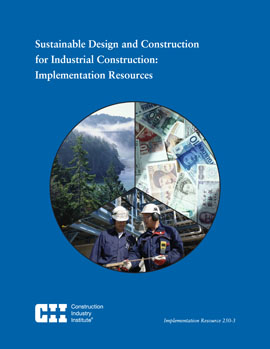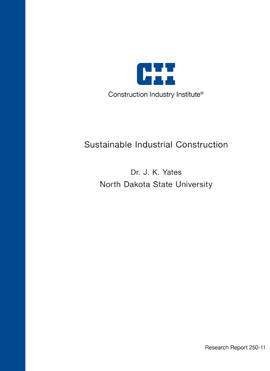
Sustainable Design and Construction in Industrial Construction
The increasing importance of sustainability is making it imperative for organizations in the industrial sector to include environmental and social considerations in the construction of capital projects. These considerations include increases in societal awareness, carbon footprints, and potential cost increases; productivity savings in construction and in operations and maintenance; increasing governmental regulations and incentives; corporate reputation; and business advantage in a competitive market. Uncertainty in the economic return of embracing sustainability will require new methods of quantifying the added value of sustainability implementation. These factors will require those in the industrial sector to increase their efforts towards sustainability on both a corporate and project level.
Some are currently addressing these issues through corporate sustainability programs, the use of a variety of existing tools and metrics, and project-level sustainable design and construction methods. Regarding a comprehensive sustainability metric for industrial construction, none currently exist for industrial construction; thus, more research is necessary to fully address this challenging topic.
This research summary includes a review of the research by the CII Sustainable Design and Construction in Industrial Construction Research Team (RT 250), including definitions of sustainability, governmental and corporate trends, corporate-level efforts, benefits and barriers, and recommended paths forward for the industry regarding sustainability.
RT 250 produced three other publications in addition to this research summary. Readers are encouraged to obtain Sustainable Design and Construction for Industrial Construction: A Primer (IR 250-2). Implementation tools developed by the team, including a checklist, a quick start guide, a maturity model, and a proposed metric can be found in IR 250-3. The team’s research report (RR 250-11) is an in-depth reference on the research performed.
{^widget|(widget_displayname)WatermarkImage|(name)WatermarkImage|(image)%7e%2fCII%2fmedia%2fPublications%2f250_1Figure1.PNG%3fext%3d.png|(width)|(height)^}
The many drivers of sustainability can be categorized into 3 major trends: regulatory trends, societal trends, and business trends. These trends include the following: (RS250-1, p. 7)
- Government Laws/Regulations
- Sustainability Performance Measured, Assessed, Ranked, and Reported
- Competitor Sustainability Initiatives
- Huge Business Opportunities
- Impacts Brand and Reputation
- Supply Chain Accountability
- License to Conduct Business
- Responsible Leadership
The research identified barriers in the industry that prevent sustainability concepts from being fully embraced on industrial projects. These barriers include the following list as the most relevant to CII members. (RS250-1, p. 7)
- Capital cost concerns
- Competitiveness
- Need positive ROR
- Unsure how to do/measure
- No implementation plan
- Unsure profitability
- Not required by regulations
This checklist identifies practical sustainable strategies for the contractor to implement on a project site to guide the contractor toward sustainability on the construction process. The checklist is shown below, including the potential credits for each category. Descriptions of these potential credits by category can be found in research.
- Site Staging and Logistics – 29 potential credits
- Site Waste Management Plan – 7 potential credits
- Post Construction Site Restoration – 4 potential credits
- Site Dust and Particulate Control – 3 potential credits
- Transportation Planning or Using Mass Transit Facilities – 2 potential credits
- Water Management – 3 potential credits
- Energy and Atmosphere – 8 potential credits
- Materials and Resources – 13 potential credits
- Investigate Alternatives for Material Deliveries – I potential credit
- Waste Management – 5 potential credits
- Lean Construction – 3 potential credits
- Indoor Environmental Control – 2 potential credits
- Social Impacts – 6 potential credits



